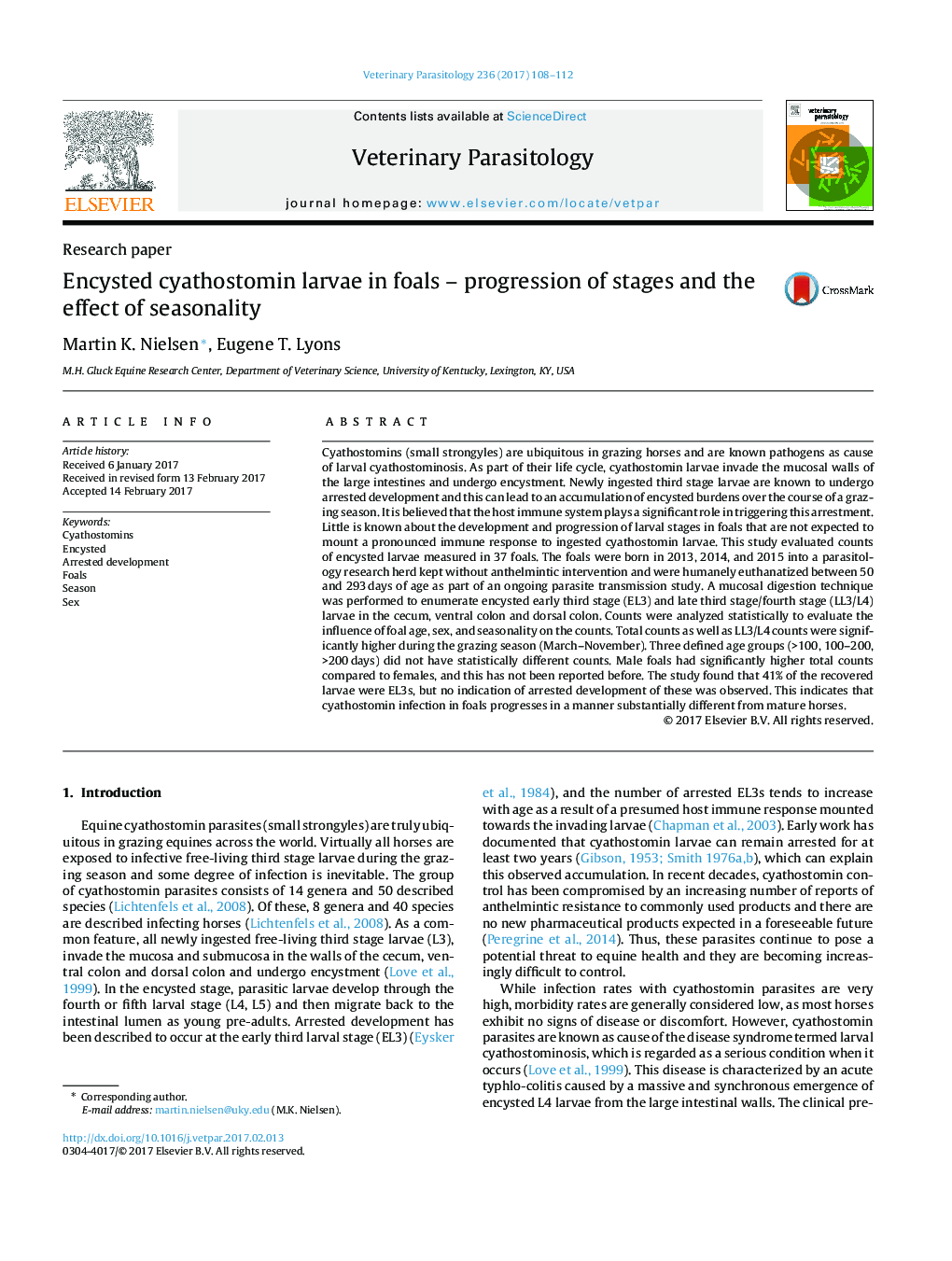| کد مقاله | کد نشریه | سال انتشار | مقاله انگلیسی | نسخه تمام متن |
|---|---|---|---|---|
| 5545833 | 1555640 | 2017 | 5 صفحه PDF | دانلود رایگان |
عنوان انگلیسی مقاله ISI
Encysted cyathostomin larvae in foals - progression of stages and the effect of seasonality
ترجمه فارسی عنوان
لاروهای سایاتوستومین در لانه ها - پیشرفت مراحل و اثر فصلی
دانلود مقاله + سفارش ترجمه
دانلود مقاله ISI انگلیسی
رایگان برای ایرانیان
کلمات کلیدی
موضوعات مرتبط
علوم زیستی و بیوفناوری
علوم کشاورزی و بیولوژیک
علوم دامی و جانورشناسی
چکیده انگلیسی
Cyathostomins (small strongyles) are ubiquitous in grazing horses and are known pathogens as cause of larval cyathostominosis. As part of their life cycle, cyathostomin larvae invade the mucosal walls of the large intestines and undergo encystment. Newly ingested third stage larvae are known to undergo arrested development and this can lead to an accumulation of encysted burdens over the course of a grazing season. It is believed that the host immune system plays a significant role in triggering this arrestment. Little is known about the development and progression of larval stages in foals that are not expected to mount a pronounced immune response to ingested cyathostomin larvae. This study evaluated counts of encysted larvae measured in 37 foals. The foals were born in 2013, 2014, and 2015 into a parasitology research herd kept without anthelmintic intervention and were humanely euthanatized between 50 and 293Â days of age as part of an ongoing parasite transmission study. A mucosal digestion technique was performed to enumerate encysted early third stage (EL3) and late third stage/fourth stage (LL3/L4) larvae in the cecum, ventral colon and dorsal colon. Counts were analyzed statistically to evaluate the influence of foal age, sex, and seasonality on the counts. Total counts as well as LL3/L4 counts were significantly higher during the grazing season (March-November). Three defined age groups (>100, 100-200, >200Â days) did not have statistically different counts. Male foals had significantly higher total counts compared to females, and this has not been reported before. The study found that 41% of the recovered larvae were EL3s, but no indication of arrested development of these was observed. This indicates that cyathostomin infection in foals progresses in a manner substantially different from mature horses.
ناشر
Database: Elsevier - ScienceDirect (ساینس دایرکت)
Journal: Veterinary Parasitology - Volume 236, 15 March 2017, Pages 108-112
Journal: Veterinary Parasitology - Volume 236, 15 March 2017, Pages 108-112
نویسندگان
Martin K. Nielsen, Eugene T. Lyons,
